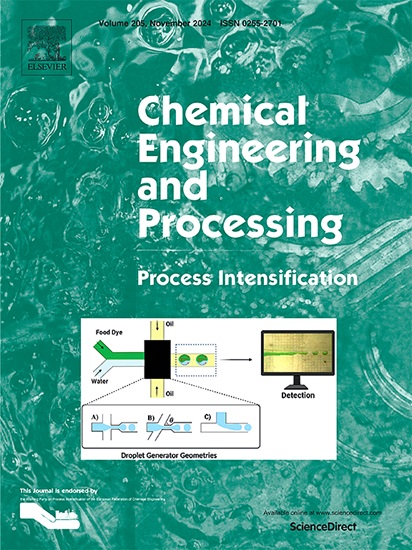Visualization study on temporal regime transition of multicomponent subcooled flow in microchannel
IF 3.8
3区 工程技术
Q3 ENERGY & FUELS
Chemical Engineering and Processing - Process Intensification
Pub Date : 2025-02-01
DOI:10.1016/j.cep.2024.110091
引用次数: 0
Abstract
Researching the regime transition of the subcooled flow is essential for designing high-performance heat exchangers. A high-speed camera platform is built to study the bubble behavior of the subcooled boiling of a water-ethanol mixture in a microchannel. Simultaneous synchronisation of thermodynamic transient characterisation and high speed flow visualisation. The flow in the microchannel can be divided into single-phase convection, isolated bubble, bubbly flow, and slug flow regions. The combination of micro-channel and multi-component coolant along with keeping the subcooled boiling within the bubbly flow region can improve the heat transfer performance. The wall effect in the microchannel will enhance the bubble-induced heat transfer and result in a reduced heat transfer performance under higher inlet velocity conditions. Compared with lower velocity of 0.05 m/s, the bubble departure frequency for higher velocity of 0.15 m/s decreased by a maximum of 2 times in the bubbly flow region. The heat transfer coefficient for the bubbly flow regime is found to be universally proportional to the void fraction for all conditions analysed in this paper. Hence, the manners that are beneficial for void fraction improvement can be utilized to regulate the heat transfer coefficient of the microchannel within the bubbly flow regime.

求助全文
约1分钟内获得全文
求助全文
来源期刊
CiteScore
7.80
自引率
9.30%
发文量
408
审稿时长
49 days
期刊介绍:
Chemical Engineering and Processing: Process Intensification is intended for practicing researchers in industry and academia, working in the field of Process Engineering and related to the subject of Process Intensification.Articles published in the Journal demonstrate how novel discoveries, developments and theories in the field of Process Engineering and in particular Process Intensification may be used for analysis and design of innovative equipment and processing methods with substantially improved sustainability, efficiency and environmental performance.

 求助内容:
求助内容: 应助结果提醒方式:
应助结果提醒方式:


